Table of Contents
Did you know cheesecake isn’t just a New York thing?
Many people think there’s only one kind of cheesecake. But that’s not true! Cheesecake is made in many different ways around the world. And every place has its own special style.
Some cheesecakes are thick and creamy. Others are soft, fluffy, or light like a cloud. Some are baked in the oven. Some are not baked at all. Even the cheese inside can be different—like cream cheese, ricotta, or mascarpone.
Related: Tiramisu Vs Cheesecake: Ingredients & Flavors To Calories All The Key Differences Explained
The base or crust also changes. It can be made with cookies, nuts, or even sponge cake!
So, whether you’re a cheesecake lover or just curious, this is going to be fun.
Let’s travel the world through cheesecake and see 15 types of Cheesecake around the world and how every country adds its own sweet touch in it!
What Makes Cheesecake Varieties Different Globally?
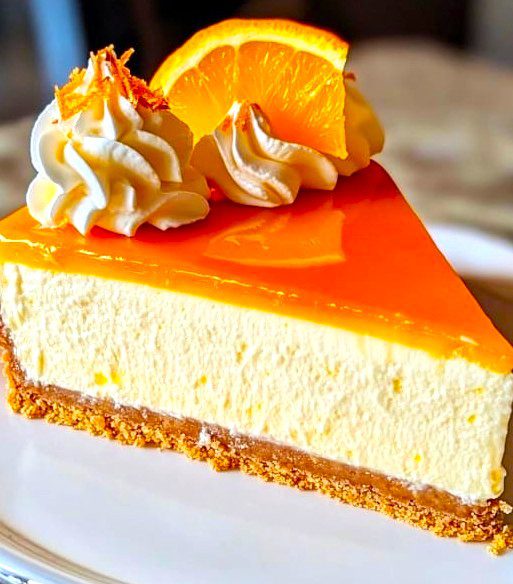
Cheesecake isn’t just one recipe—it’s many! From the base to the texture, the crust, and even the cooking style, every part of cheesecake can change depending on where you are in the world.
Cheese Base
Different cheeses give cheesecake its unique flavor and texture. In the U.S., cream cheese is the star of the show. It’s smooth and rich, making for a dense, creamy texture. But in Italy, ricotta is often used. Ricotta gives the cheesecake a lighter, grainier texture. In Germany, quark (a tangy, soft cheese) is used, giving their cheesecake a fresh and slightly tart taste. Over in the Philippines, ube (purple yam) takes the spotlight, adding both flavor and color. It’s a great twist on the traditional, creating a unique, earthy taste that’s sweet and vibrant.
Texture
The texture of cheesecake can vary from dense and rich to light and airy. American cheesecakes, like the New York-style, are typically thick and creamy, while Japanese cotton cheesecakes are airy and almost fluffy, like a cloud. The no-bake versions are even lighter, with a mousse-like consistency that’s easy to eat and incredibly satisfying. Each texture creates a different experience, from the indulgent richness of a traditional cheesecake to the soft, light feel of a cotton cheesecake.
Crusts
Cheesecake crusts can be just as diverse as the fillings. The classic American cheesecake uses a graham cracker crust that’s crunchy and sweet. But in Germany, you might find a shortcrust pastry base, which is richer and denser. In some places, like in the Philippines, a biscuit or cookie crust is more common, giving a fun, crunchy contrast to the creamy filling. Some cheesecakes even skip the crust entirely, like the Basque cheesecake, which is made without any crust, leaving only the pure filling to shine.
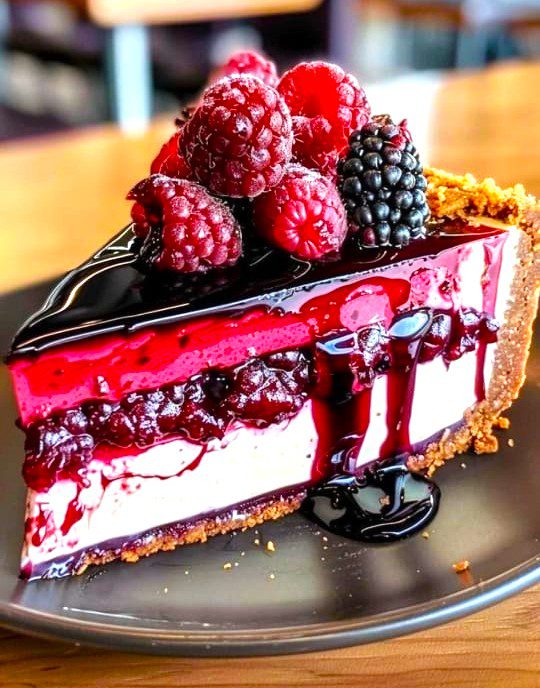
Cooking Style
Cheesecakes can be cooked in many different ways. Most traditional cheesecakes are baked, which gives them that firm, rich texture. But in places like Japan, cheesecakes are often steamed, creating a much lighter, sponge-like consistency. There’s also the no-bake variety, which skips the oven entirely. These cheesecakes rely on whipped cream and gelatin to set, giving them a soft, mousse-like texture. And then there’s the Basque-style cheesecake, which is baked at a high temperature to get a dark, caramelized top that’s crispy and sweet. Each cooking style brings out a different characteristic, making every cheesecake special in its own way.
Comparison Table: Types of Cheesecake Around the World
| Cheesecake Type | Country | Cheese Used | Texture | Baking Style |
| New York-Style | USA | Cream Cheese | Dense | Baked |
| Chicago-Style | USA | Cream Cheese/Mascarpone | Firm exterior, soft interior | Baked |
| Philadelphia Cheesecake | USA | Philadelphia Cream Cheese | Creamy, lighter | Baked |
| Italian Ricotta | Italy | Ricotta | Light, grainy | Baked |
| German Käsekuchen | Germany | Quark | Soft, light | Baked |
| Austrian Topfentorte | Austria | Quark/Curd Cheese | Light, fluffy | Baked |
| Swedish Ostkaka | Sweden | Rennet-Curdled Milk | Firm, pudding-like | Baked |
| Russian Vatrushka | Russia | Farmer’s Cheese/Cottage Cheese | Soft, dense | Baked |
| Japanese Cotton | Japan | Cream Cheese | Airy, fluffy | Baked |
| Filipino Ube | Philippines | Cream Cheese/Ube | Creamy, earthy | Baked |
| Basque Burnt | Spain | Cream Cheese | Creamy, caramelized | High-temp Baked |
| French Fromage Blanc | France | Fromage Blanc | Light, tangy | Baked |
| Vegan Cheesecake | Global (Varies) | Cashews/Coconut (Non-dairy) | Creamy, smooth | No-bake/Chilled |
| Fusion Cheesecakes | Global (Modern) | Varies (CreamCheese/ Mascarpone/Non-dairy) | Hybrid textures | Baked/No-bake |
Types of Cheesecake Around the World
Cheesecake comes in many forms, and different regions around the world have their own special ways of making it. From creamy New York-style cheesecakes to light Japanese cotton cheesecakes, let’s explore the most popular varieties!
North America
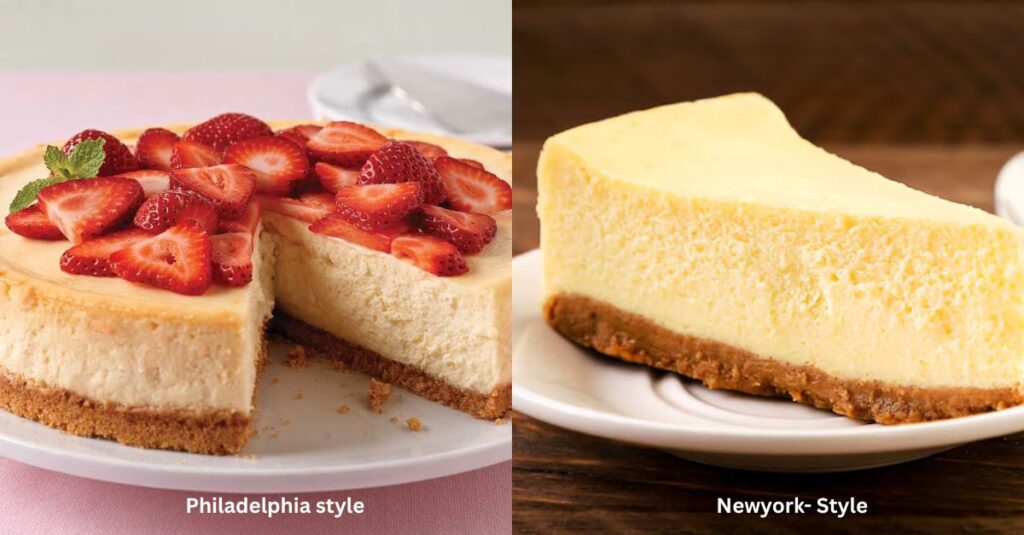
- New York-Style Cheesecake
This is the cheesecake most people think of when they hear the word. It’s thick, dense, and creamy. Made with cream cheese, it’s typically served with no topping or just a simple strawberry sauce. The graham cracker crust is a must for the perfect balance of crunch and creaminess. - Chicago-Style Cheesecake
Chicago-style cheesecake is famous for its firm, almost biscuit-like exterior and its soft, creamy interior. It’s often made with a combination of cream cheese and mascarpone, giving it a smooth texture. This version is a bit heavier than New York-style, but it’s just as satisfying. - Philadelphia Cheesecake
As the name suggests, this cheesecake uses Philadelphia cream cheese, which makes it extra creamy and lighter than the New York-style version. It’s typically smoother and fluffier, with a more delicate texture, making it a favorite for those who prefer a less dense dessert.
Europe

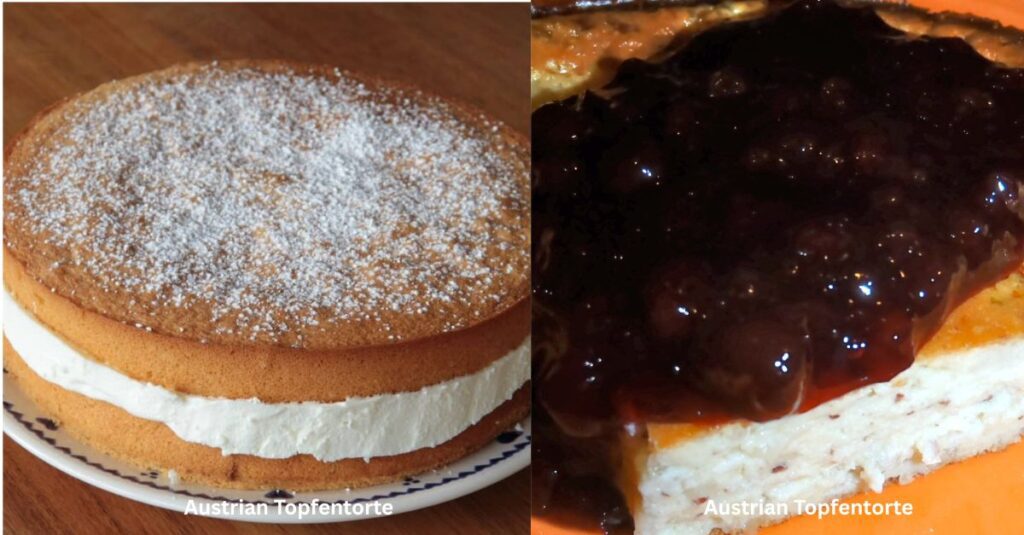
- Italian Ricotta Cheesecake
Italy brings us a lighter, grainier cheesecake made with ricotta cheese. It’s less sweet than the typical American version, with a more savory edge. Sometimes flavored with lemon or orange zest, it’s a refreshing take on cheesecake that’s perfect for warm weather. - German Käsekuchen
Käsekuchen is a German cheesecake that uses quark cheese, which is soft and tangy. It’s lighter than New York-style cheesecake and has a shortcrust pastry base for added crunch. Often flavored with lemon zest, this cheesecake is a favorite homemade dessert in Germany. - Austrian Topfentorte
Made with quark or curd cheese, Topfentorte is a light and fluffy cheesecake from Austria. It’s often layered with fruit or jelly for extra flavor. With its soft texture and mild taste, this is a comforting dessert loved by many. - Austrian Topfentorte
Ostkaka is a unique Swedish cheesecake. It has a firmer, more pudding-like texture and is made with rennet-curdled milk. Ostkaka is often served warm with jam and cream, and it has a distinctive almond flavor, making it a cozy treat during colder months. - Russian Vatrushka
Vatrushka is a small round pastry filled with cheese, typically made with farmer’s cheese or cottage cheese. It’s a popular snack or breakfast in Russia, often containing raisins or other dried fruits. Though it’s not a full cheesecake, the cheese filling makes it a close relative!
Asia

- Japanese Cotton Cheesecake
Japanese cotton cheesecake is light, fluffy, and jiggly, almost like a soufflé. It’s less sweet than most cheesecakes and has an airy, melt-in-your-mouth texture. This version is perfect for those who prefer a soft, delicate dessert that’s not too heavy. - Indian Fusion Cheesecakes
Indian fusion cheesecakes are gaining popularity worldwide. These cakes blend traditional Indian sweets with classic cheesecake flavors. For example, a gulab jamun cheesecake or Jalebi Cheesecake combines the flavors of the popular Indian sweet with a creamy cheesecake base. It’s a perfect marriage of rich, warm spices and cool, smooth cheesecake. - Filipino Ube Cheesecake
Ube cheesecake is a vibrant, colorful treat from the Philippines made with purple yam (ube). The earthy, sweet flavor of ube shines through in this creamy cheesecake. Its striking purple color makes it visually stunning, and the addition of coconut or graham crust layers adds texture.
Others / Unique Styles
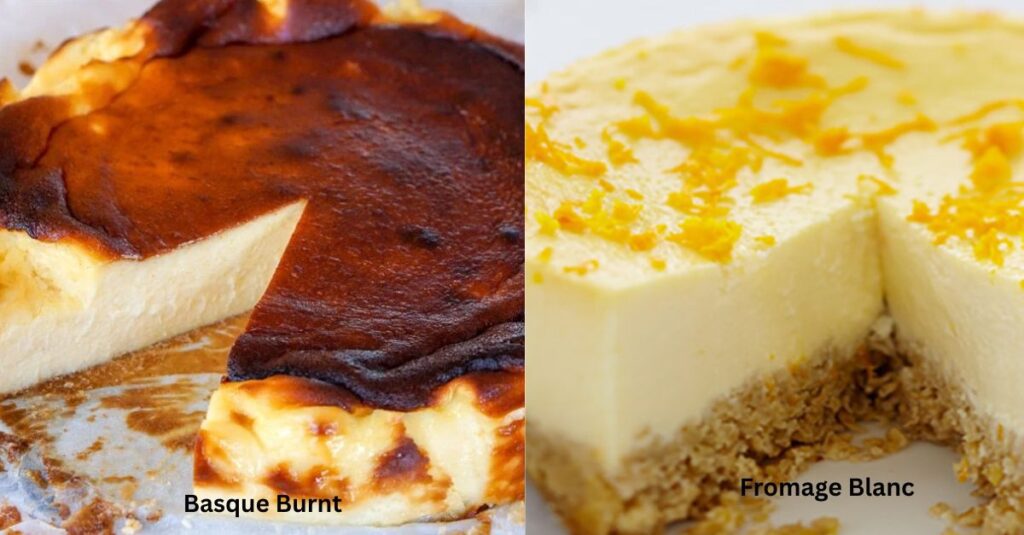
- Basque Cheesecake (Spain)
Basque cheesecake has a signature burnt top, but don’t worry—it’s not actually burnt in flavor. The dark caramelized top contrasts perfectly with the creamy interior, which is rich and smooth. What’s unique about this cheesecake is that it has no crust, which makes it a simple yet flavorful dessert. - French-Style Fromage Blanc Cheesecake
Fromage blanc is a soft, tangy cheese that gives French-style cheesecakes their light texture. This version is less sweet than most other cheesecakes and has a fresh, airy flavor. It’s a lesser-known variety but perfect for those who want something tangy and refreshing.
Vegan / Modern Global Style
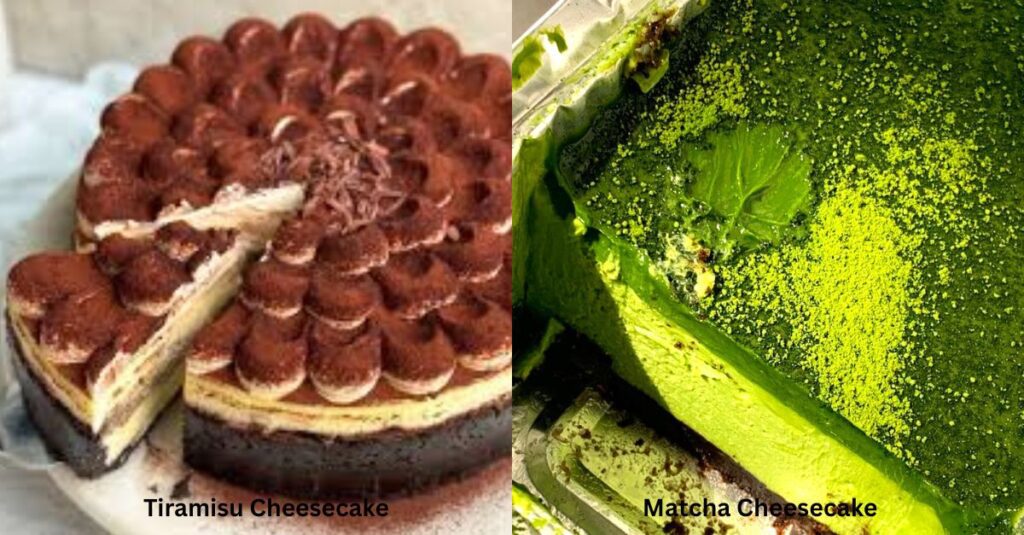
- Vegan Cheesecake
Vegan cheesecake is made without dairy, using ingredients like cashews or coconut as the base. The crust is often made from dates and nuts, creating a naturally sweet, crunchy texture. Vegan cheesecakes come in many flavors, from classic to fruit-infused, and they’re a great option for anyone avoiding dairy. - Fusion cheesecakes
Fusion cheesecakes are a modern twist on the classic dessert, blending rich creaminess with bold flavors from around the world. From the Italian-inspired Tiramisu Cheesecake with layers of espresso-soaked ladyfingers and cocoa-dusted mascarpone, to the earthy and elegant Matcha Cheesecake from Japan, each variety offers a unique experience.
Different Types of Cheesecake Crusts Around the World
Different Cheesecake crusts are just as diverse as the fillings of it! Here’s a look at some of the most popular ones:
1.Cookie Crust (USA):
In America, cheesecake often features a buttery graham cracker crust. It’s crunchy and slightly sweet, providing the perfect base for creamy cheesecakes like the classic New York-style.
2.Digestive Biscuit Crust (UK):
In the UK, digestive biscuits are used to create a crisp yet slightly crumbly crust. It has a bit of a wholesome taste and pairs beautifully with lighter cheesecakes like the British-style or no-bake versions.
3.Pastry Base (Europe):
In many parts of Europe, cheesecakes use a soft pastry base. It adds a more delicate, flaky texture that contrasts with the creamy filling. This is common in Italian Ricotta Cheesecake or German Käsekuchen.
4.Nut-Based or Rice-Based Crusts (Modern/Vegan):
For a modern or vegan twist, some cheesecakes feature nut-based crusts made with almonds, cashews, or even a mix of dates and nuts. You’ll also find rice-based crusts, which are great for gluten-free or vegan options. These crusts are rich, crunchy, and full of flavor, giving a nice texture to plant-based cheesecakes.
Conclusion
Cheesecakes are more than just a dessert; they reflect the culture and flavor preferences of the regions they come from. Whether it’s the rich and creamy New York-style cheesecake or the light and airy Japanese cotton cheesecake, every variety tells a unique story of local ingredients and traditions.
So, why not step out of your comfort zone and try a new cheesecake from around the world? Which one is your favorite?

